#la calahorra
Text
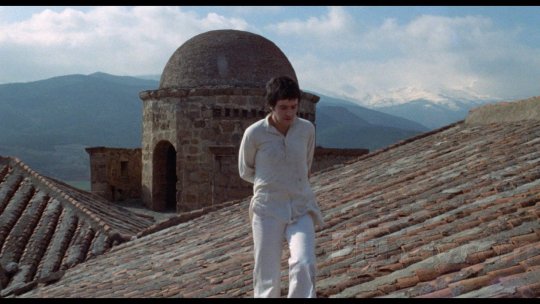
David Essex on the roof of Castillo de La Calahorra. "Stardust" by Michael Apted (1974) 🎬 📽️ (Guadix)
3 notes
·
View notes
Text



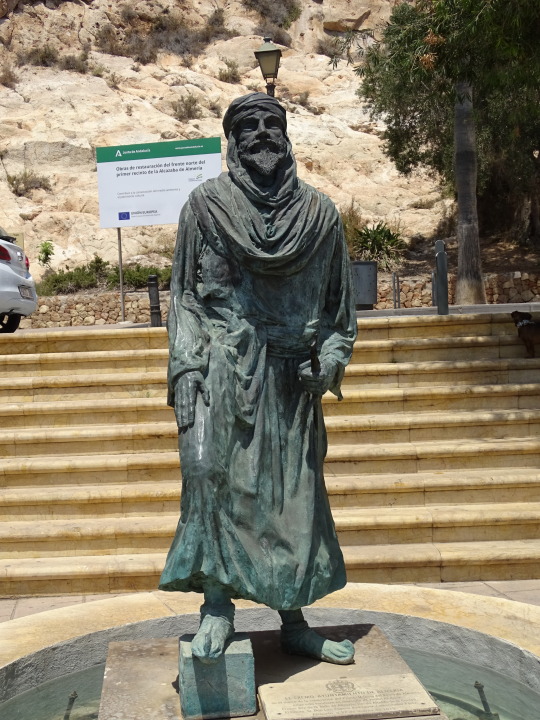
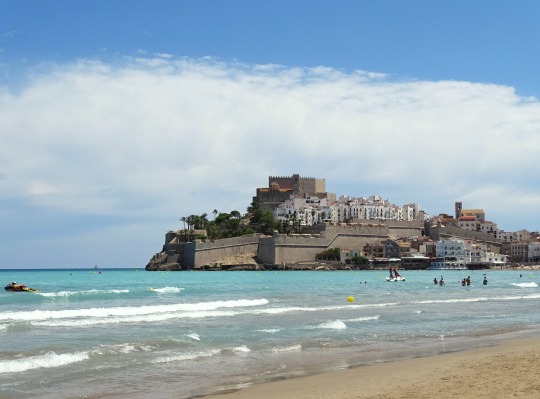


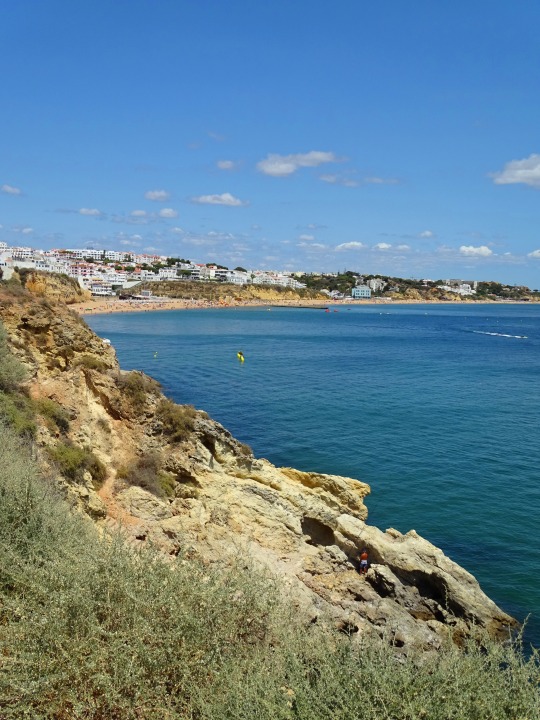




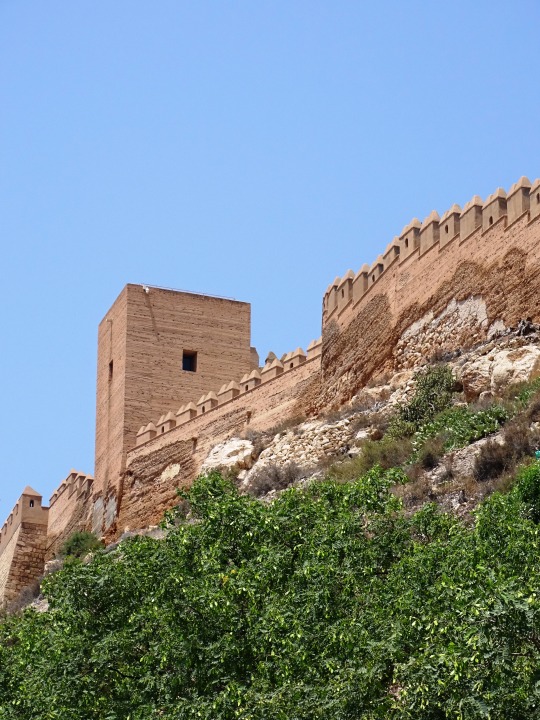

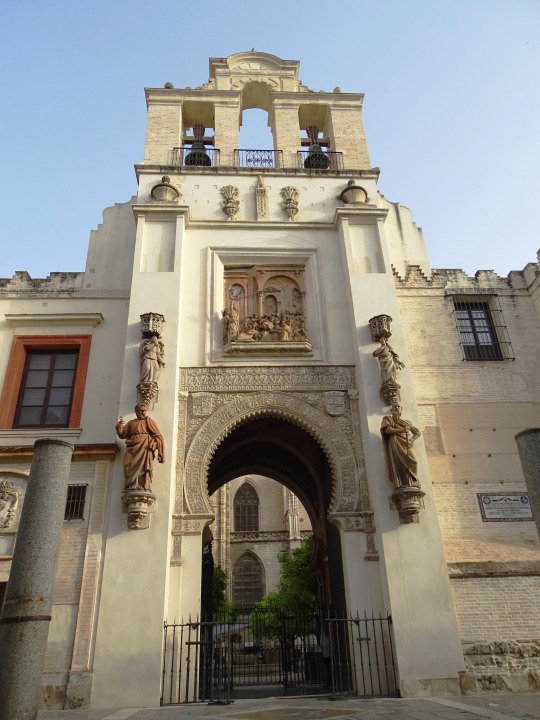

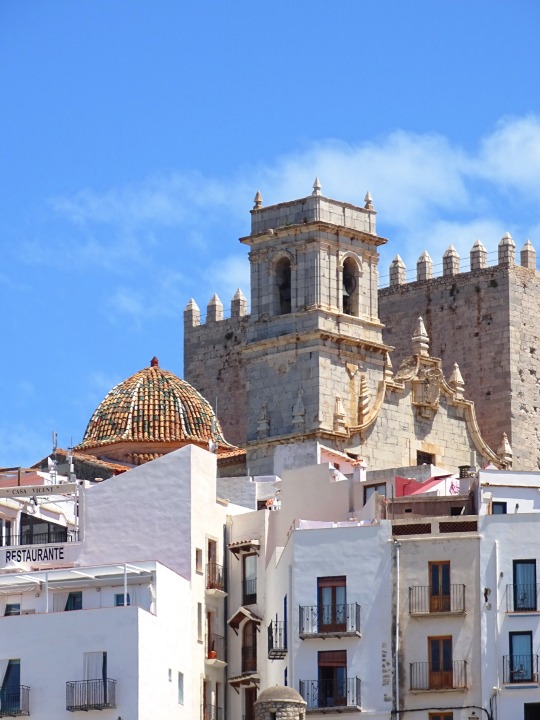



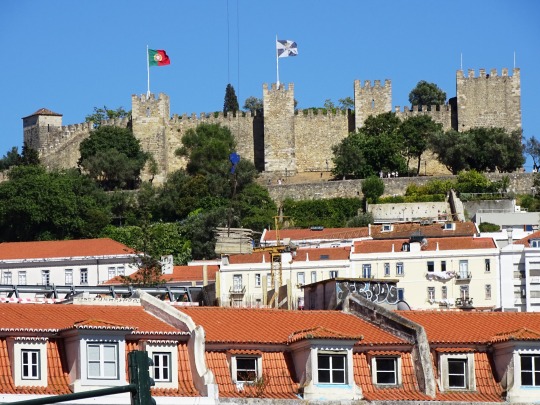
Islamic conquest of Hispania: Moorish troops led by Tariq ibn Ziyad land at Gibraltar to begin their invasion of the Iberian Peninsula (Al-Andalus) on April 27, 711.
#Alcazaba y Murallas del Cerro de San Cristóbal#Almería#Jayran al-Amiri#Reales Alcázares de Sevilla#Islamic conquest of Hispania#Tariq ibn Ziyad#begin#invasion#Iberian Peninsula#Spanish history#travel#Portuguese history#summer 2021#original photography#Sevilla#Castillo De La Calahorra#São Jorge Castle#Lisbon#Portugal#Spain#España#Gate of Forgiveness#Seville Cathedral#Castelló de Farfaña#Castillo de Peñíscola#Mediterranean Sea#Albufeira#Atlantic Ocean#vacation#27 April 711
7 notes
·
View notes
Text
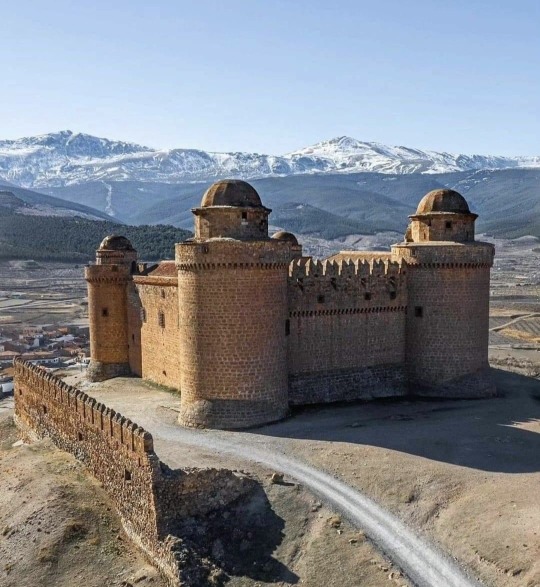
De castillos y princesas.
Castillo de la Calahorra. Granada
56 notes
·
View notes
Text
Art in HotD - Episodes 1x06 & 1x07
(more art in Westeros) (more art in HotD)
I’m merging the past two episodes not only because I’ve fallen behind on my own account, but because the show has slowed down with the new locations and artifacts - for the moment, at least.
The most notable new location in episode six is the castle Prince Reggio of Pentos gifts Daemon and Laena. It is in fact a real location, the Castillo de la Calahorra in Andalusia, Spain. It’s a fortress/palace built in the early 16th century with the outer walls in the Moorish style and the inner space in the style of the Italian Renaissance; even the materials and the stonemasons were imported from Italy.

(pictures from lossietereinos.com)
The Italian Renaissance style matches what is suggested to be the vibe of the Free Cities, with their Valyrian-based language (so essentially the equivalent of a Romance language) and artistically forward culture, juxtaposed with the more medieval Westeros. According to the behind the scenes featurette, the areas of the castle they were allowed to film in were limited for safety reasons. As a matter of fact, scenes are only filmed in the exteriors, in the room with the fireplace, and in the “library”.
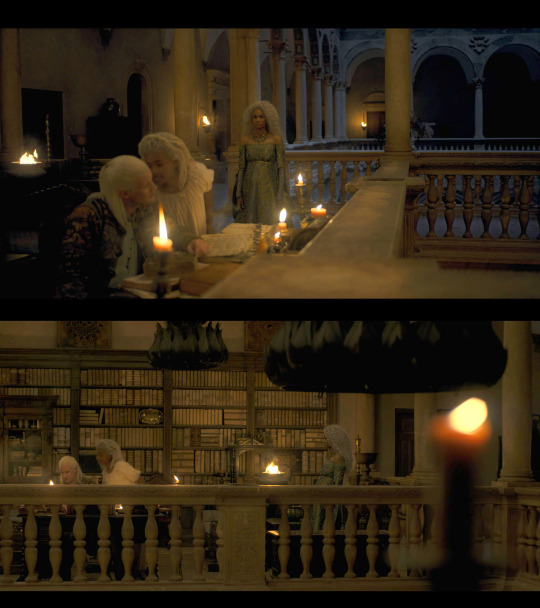
The latter makes for an interesting visual, because it’s very unlikely for a library to be placed semi-outdoors, so I suspect this is also a choice dictated by having to make the most of the few locations they were allowed to use. But we are watching a fantasy story, and creating this slightly uncanny space for what we usually expect to be a closed environment almost feels like a callback to the art trope of the capriccio, where familiar architectural and landscape elements were combined in creative and fantastical ways, often mixed with ancient ruins.
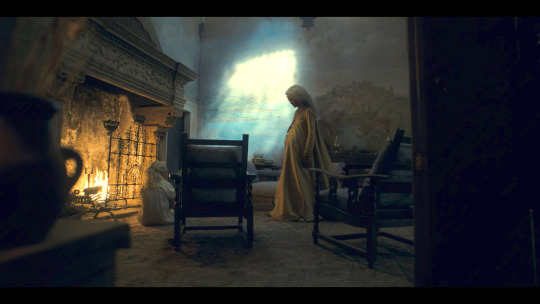
The fresco in Baela’s room, depicting the castle overlooking the coast of Pentos, is quite obviously an addition by the show’s art department as the walls in that room were actually blank. The style mimics the airier, naturalistic Renaissance landscapes rather than the ornate international gothic we’ve seen in Westeros. And now, back to the western continent:
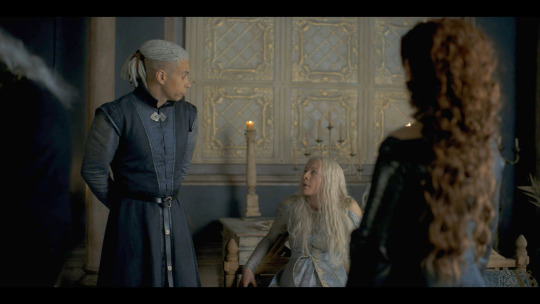
It’s the ten years time jump episode and the Red Keep is the same as we left it - except for Alicent’s chambers. Most notably, she covered the Valyrian frescoes depicting dragon orgies with nondescript ornate panels. This signifies that she stopped trying to fit in an environment where she will always be treated like the odd one out and pushed aside, and started carving a space of her own, beginning from her living quarters. It’s also a pivot towards a distinctly puritanical direction to mark her difference from “scandalous”, brazen Rhaenyra; the room is also full of candles and seven branched candelabra, which are instruments of worship in the Faith of the Seven.
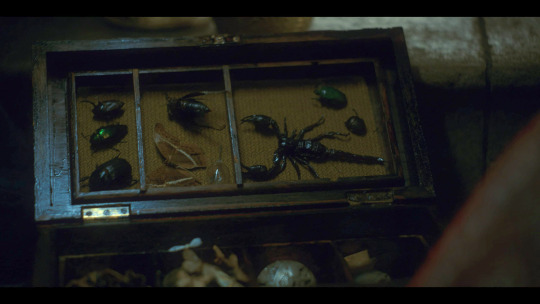
Helaena’s bug box... also a mini wunderkammer.
Speaking of Alicent, this is a parallel many have drawn, but a lot of her styling, especially post time jump, is reminiscent of pre-raphaelite aesthetics and generally 19th century takes on the archetype of the medieval lady:
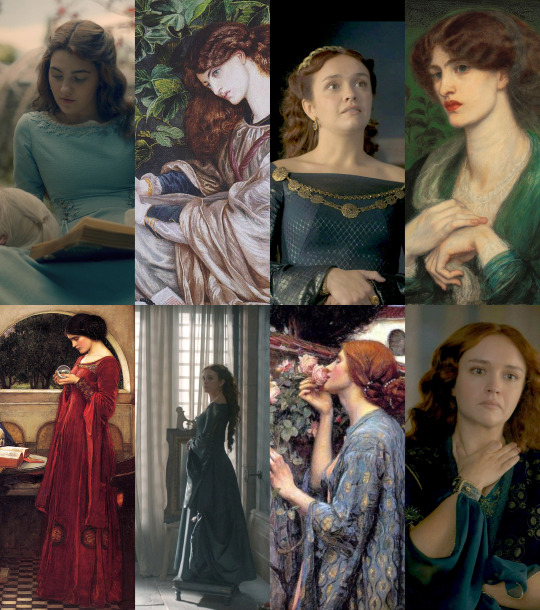
The 19th century medieval revival still has a lasting impact on the common perception of how a vague notion of “Middle Ages” is supposed to look like, and it’s an aesthetic that trickled over to fantasy. Women’s looks especially tend to be a lot softer in pop culture than they actually were; if we look at art from the 13th century onward it’s rare to see a woman with her hair completely let down (unless it’s an allegorical paiting of some kind), they usually had pretty structured hairdos and/or head coverings. A high forehead was considered beautiful so they often shaved their hairlines, something that looks jarring to the modern (post-industrial?) eye. Clothes were also very structured (though, I’d argue, not as structured as in later eras starting from the late Renaissance) as opposed to the comfy, flowing robes the pre raphaelites often liked to paint.
What does this have to do with Alicent? I think it’s important for her to look like THE medieval lady, because from her point of view she is living a paradox: she is conforming, she is doing everything that has been asked of her to fulfill her role, but she has been planted in a foreign garden (though ironically it’s more like she is the native flower in the enclosed garden of exotic plants that is the Targaryen court). We, as the viewers, have to identify her as someone living within a certain conventional tradition that is at odds with what the Targaryens have going on, their costume design itself borrowing from Western as well as Eastern influences (byzantine, Russian, but also East Asian as we’ve seen in the Valyrian wedding of episode 7). The 19th century medievalist art was also deeply linked to theater; I’m just giong to leave this here.
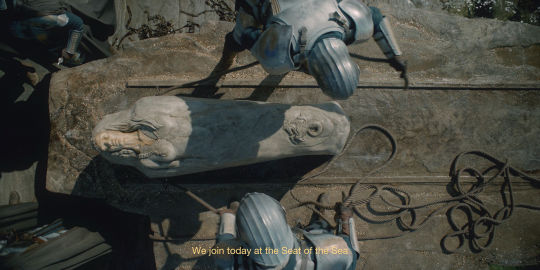
Just a couple of notes on episode 7. The actions takes place in sets we’ve mostly already seen, but there are still a couple of new artifacts worth looking at at High Tide. One is obviously’s Laena’s stone sarcophagus. It’s reminiscent both of ancient Egyptian sarcophagi and of western tombs of nobles and royalty, where the gravestone often had a sculpted relief, or all around statue, of the dead subject depicted lying down in eternal sleep. In the BTS it’s explained that the whole island is supposed to be built upon the sarcophagi of the ancestors piling up (!).

This scene and the lore that accompanies it, especially when bookended by the wedding at the end of the episode, does a good job of subtly communicating the diversity of Valyrian culture, implying that - just like in the usual Roman Empire analog - it was religiously as well as ethnically diverse. The Velaryons have a whole set of traditions related to the Merling King and the cult of their own ancestors that don’t seem to belong to Targaryens, who in turn have their own mythos surrounding dragons and blood magic. Yet both families claim to be 100% Valyrian and they acknowledge each other as such. How someone can prefer a version of the lore where “Valyrian” is an ethnic and cultural monolith escapes me, but I’m digressing.

Speaking of ancient civilizations: in the funeral scene, Corlys gifts a horse miniature to Luke. In Greek mythology horses were a symbol of Poseidon, and the seahorse is the sigil of House Velaryon, so it tracks with their identity as seafarers; however, the toy here seems to be a copy of a mid-20th century Etruscan inspired sculpture that you can easily buy online if you google “Etruscan horse figurine”. It’s a bit like the pre raphaelite Alicent look: we are informed of the Velaryons’ connection to an archaic world not necessarily through authentic archaic art, but through the version of it that’s already been filtered through the modern gaze.
That about wraps it up for now! I don’t know how many new artistic references we will encounter in the final three episodes so I might do another merged post. Or not! So much keeps going on! Thanks for reading!
136 notes
·
View notes
Text
Huéneja to Alquife
19.5km in 4.5 hours walking time and about 400m of elevation.
This morning we had breakfast of the porridge Jose is carrying at the albergue while the rest of our pilgrim mates went down to the bar for breakfast. This had the bonus of putting us on the Camino first so for once we did see quite a lot of our fellow pilgrims.
Today was a beautiful day of walking, definitely one of the highlights. Barely any river bed walking more tracks and 4WD roads, which was more like what we were expecting. Lots and lots of almond trees today.
We had coffee and a snack in Ferreira and this was where we regrouped with most of the other pilgrims who had passed us along the way. After Ferreira we had the solo French lady and the guy from Mallorca in sight for the rest of the day.
Our next town was La Calahorra. The town has a castle above it that you can see for miles. Sean Connery filmed a movie there (Wind and the Lion). A lot of the filming for The good, the bad and the ugly was also done around here and there is a statute of Clint Eastwood as you enter town. There’s also apparently a statue of Sean Connery but we didn’t see it.
After La Calahorra we walked into a mining area. We knew the area was famous for iron. At one point we walked onto a road that from a distance I thought was hard packed red clay but it was actually tarmac with so much red dust on it it looked red.
We eventually entered Alquife but unfortunately our albergue is a long way out of town, all uphill. I was not the only grumpy pilgrim about this fact because it’s not even on the Camino 😫
Thankfully the chap running the albergue (it’s privately run) offered to drive us back into town for lunch. We grabbed some provisions from the supermarket while we were there so we won’t have to venture back in again tonight.
We had lunch with the man from Mallorca and the French lady. It’s funny we haven’t exchanged names, we all just refer to each other by where we come from. The French lady is very nice but only speaks French so communication is a bit limited as our French is very limited. It was a nice lunch, menu of the day.
After lunch we trudged back to the albergue for showers, clothes washing and just chilling out for the afternoon. Having had a biggish lunch we just have some nibbles for dinner in the albergue.
Unfortunately there wasn’t a 100km marker on the Camino today. We are now 120km in, just under 100km from Granada and about 1,263km from Santiago de Compostela.
4 notes
·
View notes
Text

These were surgical tools they used to use. This was taken at the Tower of La Calahorra. It’s amazing to see how far medicine has come, especially since I’m in the healthcare field myself. It makes me wonder how more advanced we will get and if we will ever look back on equipment we use today the same as looking at this equipment. Some of these were used at gynecological equipment. I wish there was more information about these and how they worked, but overall it was really cool to see. It was also the first thing I’ve seen directly related to nursing so I felt I resonated with it.
3 notes
·
View notes
Text
Banu Qasi triology: Locations (+ Maps extracted from the book and modern reconstruction of plans of some cities of that period of time I found on Internet)
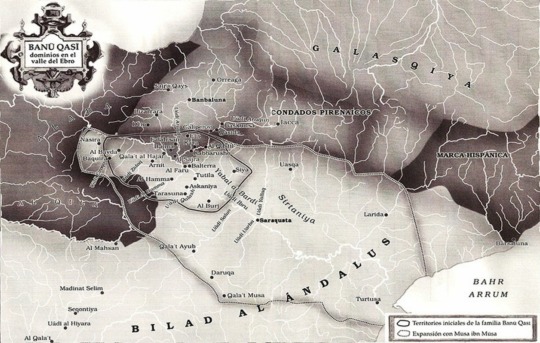


(* Some towns and cities that already existed are not in this maps, but probably were not included in the maps because maybe they're not relevant for the story, X, X, X )
Zaragoza (×) (although this one represents the Zaragoza from 11th century, due to the presence of the Palace of Aljaferia (×), although a watchtower existed since 9-10th centuries in that place, the Troubadour's Tower, that currently forms part of the palace)
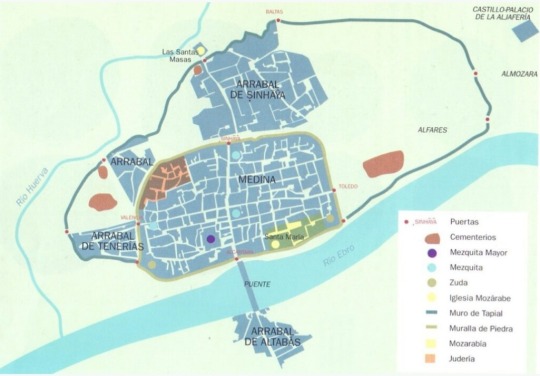
Tudela, but here's a video of Pamplona/Iruña
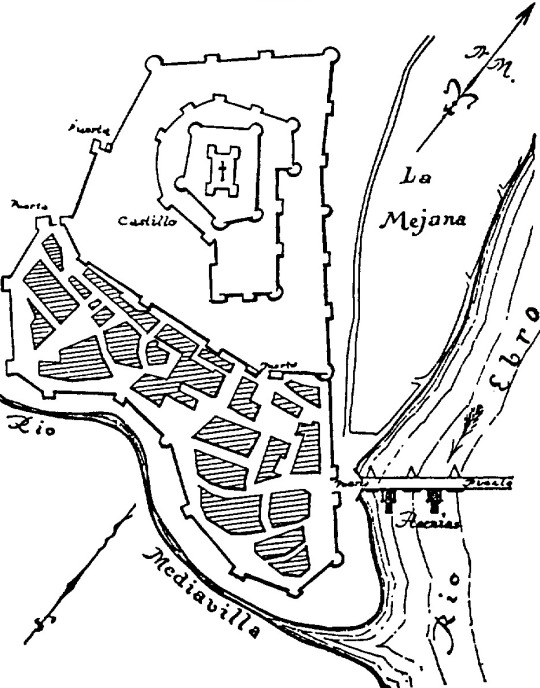
Córdoba (Here's a video with the current-day Alcázar and the Caliphal baths)
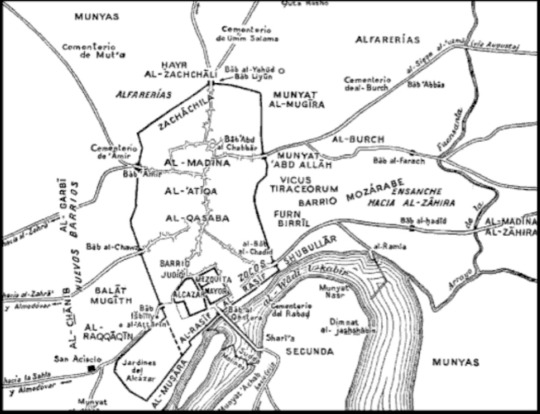
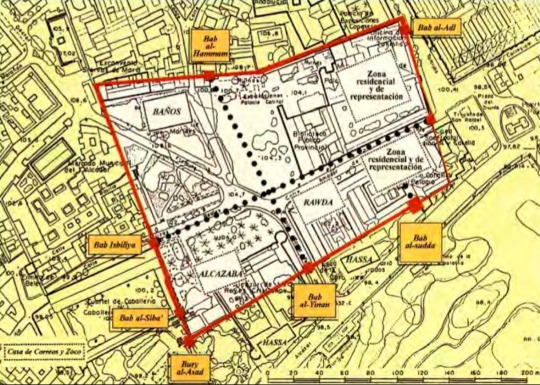

Toledo
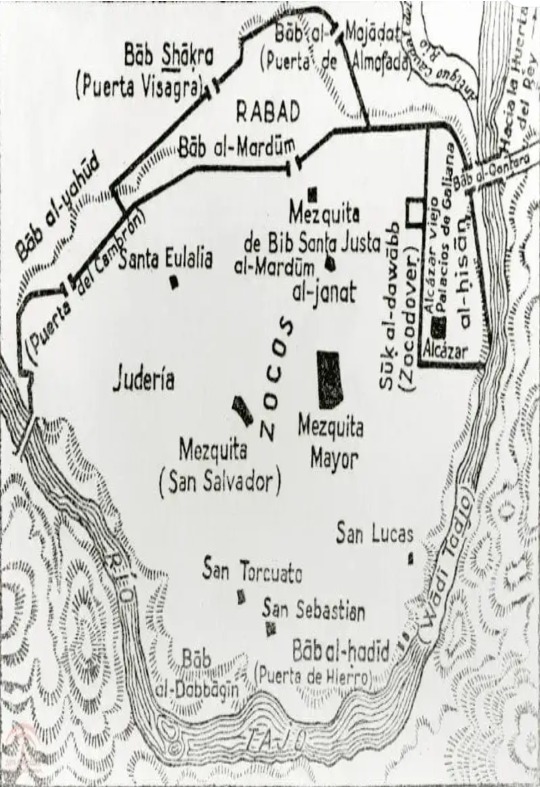
Alaba: Álava
Al Bayda, Albayda: Albelda
Al Burj: Borja
Al Busherat: Las Alpujarras
Al Faru: Alfaro
Al Garb: 'the west', Algarve
Al Hamma: Alhama
Al Hamma: site that corresponds to the current Baños de Fitero
Al Hamra: 'the red', the Alhambra of Granada
Al Lura: Álora
Al Maghrib: current Maghreb area, Morocco, Algeria and Mauritania
Al Mahdiyya: capital of the Fatimid Caliphate founded by Al Mahdi
Al Mariya: Almería
Al Mahsan: Almazán
Al Mudawar: Almudévar
Al Munastir: Almonacid
Al Qala't: Alcalá de Henares
Al Qāhira: Cairo
Al Qastil: Carcastillo or Murillo el Fruto
Al Qila: Castile
Al Qulaiya: Alcolea
Al Qubba: Talavera
Al Rawda: one of the interior gardens of the alcazar of Córdoba, where most of the emirs were buried
Al Sarqiyya: Axarquía, in Granada
Al Xaraf: Aljarafe
Al Jazira: Algeciras
Almunya de Aisha: Muniesa
Al Sajra: Azagra
Antaqira: Antequera
Arnit: Arnedo
Aryiduna: Archidona
Askaniya: Cascante
Asturqa: Astorga
Asnad:Cenes
Astīban: fortress located in the current-day Alhambra
Aura: Fortress next to Barcelona, possibly in present-day Valldaura
Aybar: Aibar
Bab al Qantara: the Bridge Gate, in Córdoba, also known as Bab as-Sudda or the Azud Gate
Baghdad: capital of the Abbasid emirate
Bagúh: Priego
Bahr Algarbí: Atlantic Ocean
Bahr Arrum: Mediterranean sea
Balaga: Balager
Balma: place located on the left bank of the Ebro river next to Calahorra, it may correspond to the town of San Adrián
Balansiya: Valencia
Balterra: Valtierra
Bambaluna: Pampiluna, Pamplona
Banu Basir: Benameji
Baquira: Viguera
Barbitaniya: región of Sobrarbe, that included Jaca, Barbastro and Boltaña
Barsaluna: Barcelona
Baskunsa: place name that would correspond to the fortress of Rocaforte, which after the Reconquest, it would give to the current Sangüesa, located at the foot of this valley
Batalyus: Badajoz
Barbastur: Barbastro
Bayanna: Baena
Bayāna: Pechina, important trading city of the Mediterranean sea, replaced by the port of Almería
Basta: Baza
Bilad al Ándalus: Hispania
Bulāy: Poley, Aguilar de la Frontera
Burbaster: Bobastro, Umar ibn Hafsún's shelter
Cantabria: mountain range that borders river Ebro by the north, next to Logroño
Castro Muros: San Esteban de Gormaz
Dar al Islam: the lands of Islam
Dar al Rahn: the House of Hostages, in Córdoba
Daniya: Denia
Daruqa: Daroca
Deio: Monjardín
Dus Amantis: the Rock of the Lovers
Falah'san: Falces
Fās: Fez, capital of the Idrisi emirate
Finyāna: Fiñans
Galaskiya: Land of the galaskiyun, the gascons
Galipenzo: Gallipienzo
Garnata: Granada
Girunda: Girona
Hardaris: Ardales
Hisn Asar: Iznájar
Hisn Qámara: castle of uncertain location, near Colmenar and Casabermeja, in the province of Málaga
Hisn Qastuluna: the ancient Roman city Cástulo, in Jaén
Iacca: Jaca
Ifriqiya: Tunisia
Ilbira: Elvira, next to Granada, capital of the distrit with the same name.
Isbāniyā: Christian chroniclers called the peninsula as a whole Hispania. For the Arabs, Al Ándalus is only the land dominated by Islam. They call the Christian land by the name of their kingdoms, and the term Isbāniyā is reserved for the entire peninsula, although it is rarely used.
Ishbiliya: Sevilla
Istiba: Estepa
Istiya: Écija
Kabbaruso: Caparroso
Kara: Santacara
Larida: Lleida
Ledena: Liédena
Leqant: Fuente de Cantos
Liyun: León
Lizarrara: Estella-Lizarra
Madinat Selim: Medinaceli
Madinat al Faray: Guadalajara
Malaqa: Málaga
Mārida: Mérida
Martus: Martos
Milīla: Melilla
Millas: Mijas
Muish: Muez
Munt Sun: Monzón
Munt Liyūn: Monteleón
Mursiya: Murcia, also known as Tudmir (this name comes from the Visigothic count Teodomiro, who ruled it by the time the Muslims arrived to the Peninsula)
Nasira: Nájera
Niebla: District that corresponds to the current-day province of Huelva
Orreaga: mountains of Ibañeta or Roncesvalles
Ossa: Huesa del Común
Qabra: Cabra
Qabtil: Isla Menor (Sevilla)
Qadis: Cádiz
Qala't al Hajar/Qalahurra: Calahorra
Qala't al Hans: Alange
Qala't Gazuan: Alcalá de Guadaira
Qala't Ayub: Calatayud
Qala't Musa: Calamocha
Qala't Rabah: Calatrava
Qarmuna: Carmona
Qarqar: Cárcar
Qasida: Cáseda
Qarcastil: Carcastillo
Qasr Bunayra: Casarabonela
Qayrawán: Kairuán, capital of Ifriqiya, current-day Tunis
Quluniya: Clunia
Qumaris: Comares
Quriya: Coria del Río
Qurtuba: Córdoba
Qustantaniyeh: Constantinople
Qutanda: Cutanda
Raya: district that corresponds to the province of Málaga
Rasif: A promenade in Córdoba that ran along the right bank of the Guadalquivir river
Resa: fortress located on the banks of the Ebro, near the mouth of the river Arga
River Eiroca: River Iregua
River Iberus*: River Ebro
*the Iberian peninsula takes its name from the river Iberus/Ibero, the river Ebro
Rumiya: Rome
Sabta: Ceuta
Salubāniya: Salobreña
Santabariyya: Santaver, Muslim district that corresponds to the province of Cuenca
Saqunda: village in the suburb of Córdoba, on the left bank of the Guadalquivir river
Sajra Qays: Qays rock, fortress located near the current-day town of Huarte Araquil, in the Rock of Echauri, northwest of Pamplona
Saraqusta: Zaragoza
Seqontiya: Sigüenza
Siduna: Medina Sidonia
Sirtaniya: La Cerretania, in the Aragonese area of the Pyrenees, around the valleys of the Gállego and Cinca rivers. This denomination disappears from the sources from the 10th century, when the County of Aragon appears
Siya: Ejea de los Caballeros
Suhayl: Fuengirola
Sumuntān: Somontín
Tahert: city in the north of Africa, in Algeria
Tahust: Tauste
Takurunna: one of the corias of Al Andalus, with capital in Ronda
Tarraquna: Tarragona
Talyayra: fortress located below Bobastro, over the Guadalhorce river.
Tarasuna: Tarazona
Tāy^ula: Tíjola
Tulaytula: Toledo
Turtusa: Tortosa
Tutila: Tudela
Uādi al Hamma: River Alhama
Uādi al Hiyara: Guadalajara. At first, the name of rhe city was Madinat al Faray, but later it adopted the old name of the river Henares
Uādi al Jurs: River Guadalhorce
Uādi al Kabir: River Guadalquivir, 'the big river'
Uādi al Walid: Valladolid
Uādi Anna: River Guadiana
Uādi Aragun: River Aragon
Uādi Aruad: River Arga
Uādi Cinqa: River Cinca
Uādi Duwiro: River Duero
Uādi Eyroqa: River Iregua
Uādi Ibru: river Ebro, and by extension, the Ebro valley. (Also known as Uādi Abro or Uādi Ibro)
Uādi 'Ís: Guádix
Uādi Nahar: River Henares
Uādi Qalash: River Queiles
Uādi Salit: River Guadacelete
Uādi Salún: River Jalón
Uādi Sanyil: River Genil
Uādi Tadjo: River Tajo
Uādi Uarba: River Huerva
Uādi Urbiqo: River Órbigo
Uādi Yallaq: River Gállego
Uādi Zidaq: River Cidacos
Uakhshama: Osma
Uasqa: Huesca
Ubbada: Úbeda
Uksunuba: Faro (Portugal)
Ulit: Olite
Uriyuwala: Orihuela
Ushbuna: Lisboa
Vareia: Varea
Welba: Huelva
Yabal al Bardi: Las Bardenas Reales, in Navarra
Yabal Sulayr: the mountains of the Sun, Sierra Nevada
Yabal Tariq: 'the mountain of Tariq', Gibraltar
Yayán: Jaén
Yilliqiya: Asturias (and by extension, Galicia). It's also writen as Illiqiya or Gilliqiya.
Yussana: Lucena
Etymology II Characters
2 notes
·
View notes
Photo

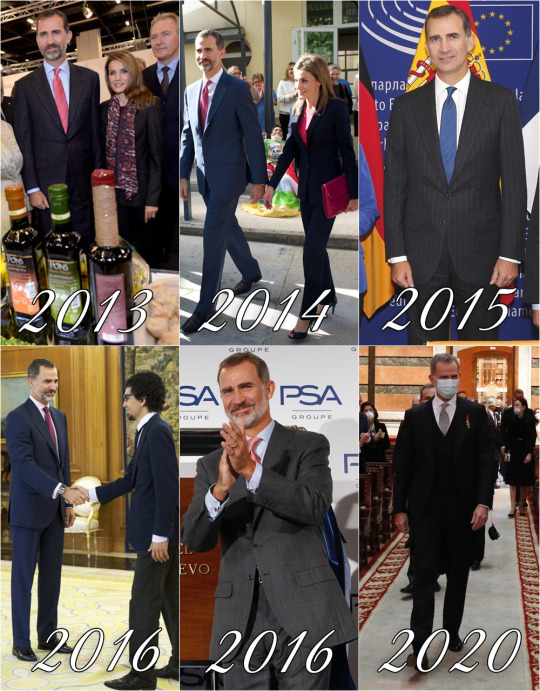

Felipe and Letizia retrospective: October 7th
2004: Visit to the Hispanic Society of America museum in Harlem, New York & Gala dinner at the Metropolitan Club in New York to celebrate the centennial of the Hispanic Society in the city (1, 2)
2008: Dinner offered to the King and Queen of Malaysia
2009: Inauguration of the new Cervantes Institute in Chicago, Illinois, USA
2010: Inaugurated “El Alma de Cordoba”
2011: Sponsorship by Princess Letizia of the “Telefónica” boat, which will participate in the “Volvo Ocean Race”
2013: Visited the official Spanish pavillion at the 32nd ANUGA trade fair for the world of food & beverages at Koelnmesse in Cologne, Germany (1, 2)
2014: Opening of the Vocational Training course at “Valle Del Cidacos” Institute in Calahorra (1, 2)
2015: Speech at the European Parliament in Strasbourg, France
2016: Audiences at la Zarzuela
2019: Event to mark the start of the manufacturing of the new Opel Corsa 100% electric in Spain
2020: Opened the Professional Training Course 2020/2021 in A Coruña & Opened the Academic Course of the Royal Academies; Delivered the 1st la Barcelona New Economy Week-Bnew Awards & Visited the 3D Printing Business Incubator and the Dfactory
2021: Delivered the first Gold Medal of the Real Academia Canaria de Bellas Artes de San Miguel Arcángel; Meeting of the Extraordinary Canary Islands Tourism Council; Videoconference with technical and scientific representatives of the Canary Islands Volcanic Emergency Plan & Closure of the first meeting of Ministers of Justice of the Spanish and Portuguese-speaking countries (COMJIB and CMJPLOP)
F&L Through the Years: 845/??
#King Felipe#Queen Letizia#King Felipe of Spain#Queen Letizia of Spain#King Felipe VI#King Felipe VI of Spain#F&L Through the Years#October7
5 notes
·
View notes
Text
A PROVINCE IN PHOTOS - LA RIOJA










sources: 1, 2, 3, 4, 5, 6, 7, 8, 9, 10
pics 1-3 are from calahorra. pic 4 was taken in the monastery of santa maría la real in nájera
1 note
·
View note
Text

Genergy is a Spanish brand founded in 2008, with headquarters located in Calahorra, La Rioja. From our beginnings we are specialized in manufacturing of portable electric generators and all kind of machinery powered by heat engines.
Genergy Power Products distributes its products in different markets, specially Europe under the brands Genergy, MGA-Spain and Zero Emission. Three prestigious brands, recognized in national and international markets, and that offer solutions to any isolated energy needs. MGA is specialized in portable generators with gasoline engines and digital inverter generators, especially suitable for domestic uses or hobby. Under Genergy brand we manufacture gasoline electric generators, 1500 RPM diesel generators and a complete range of professional machinery as air compressors, welder generators, high pressure washers, water pump, portable power stationp, etc. And finally, Zero Emission offers energy solutions more sustainable and respectful with the environment. Products that significantly reduce consumption and harmful emissions, and allow us to manage our energy more intelligently.
0 notes
Photo

“100 Rifles” by Tom Gries (1969) Raquel Welch and Jim Brown in La Calahorra
20 notes
·
View notes
Photo
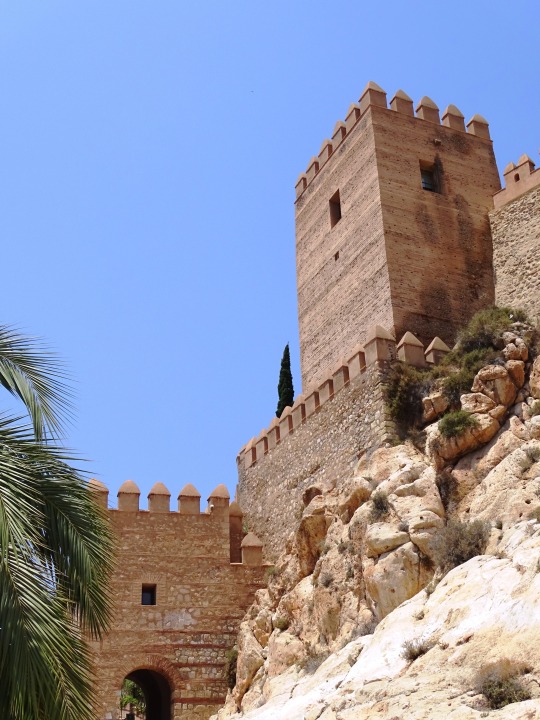

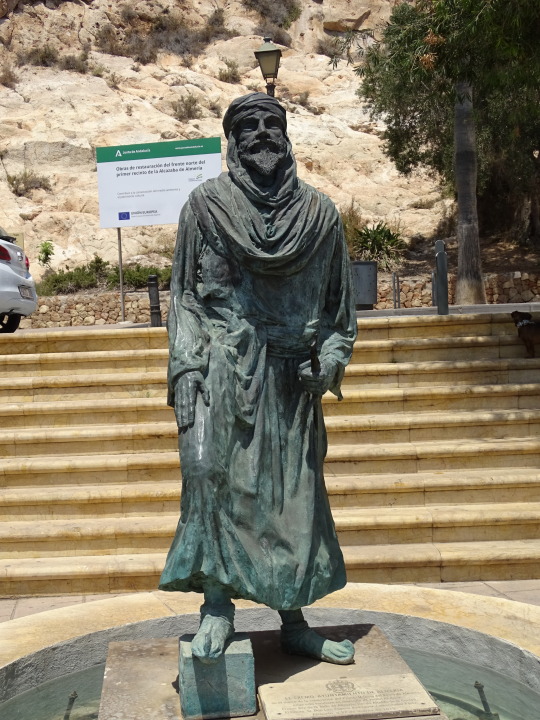

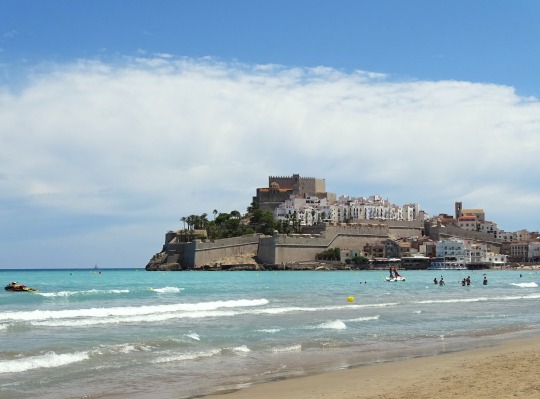

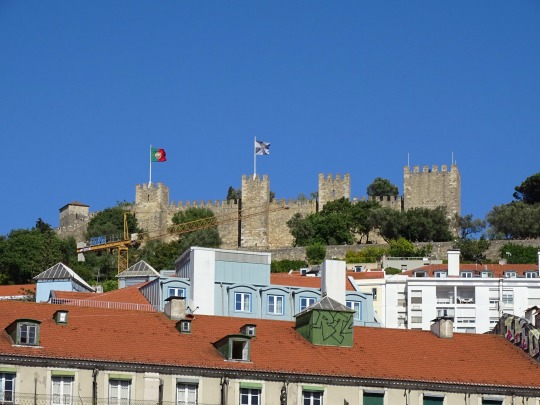
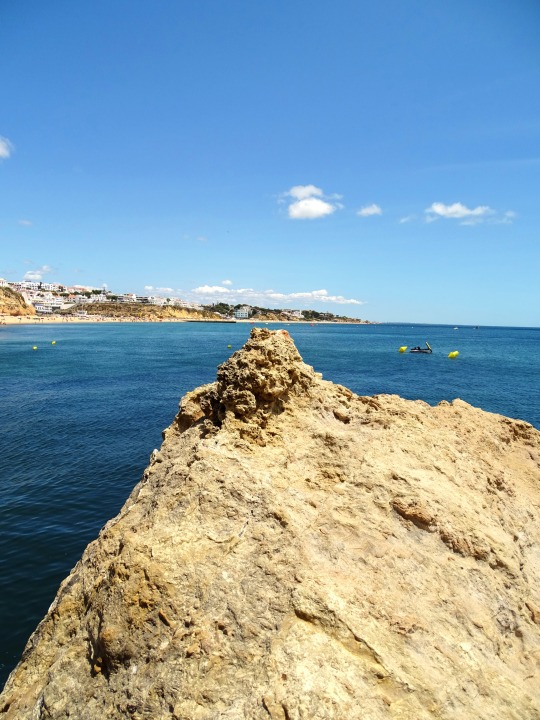


Islamic conquest of Hispania: Moorish troops led by Tariq ibn Ziyad land at Gibraltar to begin their invasion of the Iberian Peninsula (Al-Andalus) on April 27, 711.
#Jayran al-Amiri the first Arab king of Almería#Almeria#Spain#España#travel#Alcazaba y Murallas del Cerro de San Cristóbal#Castillo De La Calahorra#Seviila#Royal Alcázars of Seville#Peñíscola#Mediterranean Sea#Seville Cathedral#São Jorge Castle#Lisbon#Portugal#summer 2021#Albufeira#Atlantic Ocean#Castelló de Farfanya#Castillo de Peñíscola#Islamic conquest of Hispania#27 April 711#anniversary#Spanish history#Portugese history#original photography#architecture#cityscape#tourist attraction
3 notes
·
View notes
Text
Luque, otra tarde de rotundidad en Calahorra, donde cierra a hombros la Feria
El sevillano Daniel Luque ha salido a hombros de la plaza de toros de Calahorra (La Rioja) tras cortar tres orejas en la tercera y última de la feria por las fiestas de San Emeterio y Celedonio. En el primero, Perera brindó al público una faena a un toro de embestida dulce al que el …
La entrada Luque, otra tarde de rotundidad en Calahorra, donde cierra a hombros la Feria se publicó primero en…
0 notes
Text
¡Conoce la apasionante historia de la Dinastía Jimena!
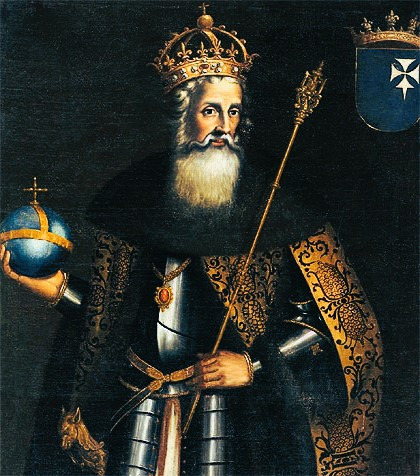
La Dinastía Jimena, también conocida como dinastía Íñiga-Jimena, gobernó el Reino de Pamplona (posteriormente Navarra) durante más de 300 años, desde el año 905 hasta 1234. Su legado está marcado por la expansión territorial, la consolidación del reino y la lucha constante contra los reinos vecinos.
Su origen se remonta a Jimeno Garcés, un noble vascón que luchó contra la invasión musulmana en la península ibérica. Su hijo, Sancho Garcés I, fue quien consolidó la dinastía al ascender al trono de Pamplona en el año 905.
Algunos de los monarcas más destacados de la Dinastía Jimena fueron:
Sancho III el Mayor (1004-1035): Expandió el reino hacia el sur, conquistando territorios como Nájera, Calahorra y Viguera. También estableció relaciones diplomáticas con los reinos cristianos y musulmanes de la península.
Sancho IV el de Peñalén (1054-1076): Se enfrentó a una guerra civil contra sus hermanos, pero logró mantener la unidad del reino. Durante su reinado se produjo la conquista de Tafalla.
Alfonso I el Batallador (1104-1134): Conquistó Zaragoza y Tudela, convirtiendo a Navarra en uno de los reinos más poderosos de la península. Participó en la Reconquista y luchó contra los almorávides.
Sancho VII el Fuerte (1194-1234): Conocido por su gran fuerza física y su valor en la batalla. Participó en la batalla de las Navas de Tolosa contra los almohades.
La Dinastía Jimena llegó a su fin en el año 1234 con la muerte de Sancho VII el Fuerte sin descendencia. El trono de Navarra pasó entonces a la dinastía de Champaña.
¿Qué te ha parecido la historia de la Dinastía Jimena? Cuéntanos en los comentarios qué monarca te ha llamado más la atención y por qué.
2 notes
·
View notes
Note
What kingdom outside of dorne do you think the alhambra palace would fit in? For instance if renly had decided to build a castle in the Stormlands would that be seen as extremely strange or a sign of his arty ness?
Eclectic, “different” castles have definitely been a thing historically (one of the most striking examples from the medieval period is the octagonal floor plan of Castel del Monte in Andria, Italy). Even the Castillo de la Calahorra that was used in House of the Dragon fall into that category since at that point having Italian Renaissance architecture and decoration in Andalusia would have been a novelty. So yeah, in theory there’s nothing preventing a westerosi noble from building a castle in a different style than what is common in their region; besides, in asoiaf canon, most of the great houses have distinctive, over the top castles, because this is fantasy after all. But if we consider the specific scenario of Renly building himself a castle in a perceived Dornish or Dornish adjacent style… that might raise eyebrows among his main allies the Tyrells, given their history with house Martell; it would be a pretty unconscionable political move on Renly’s part.
ETA: also this other elephant in the room!

9 notes
·
View notes
